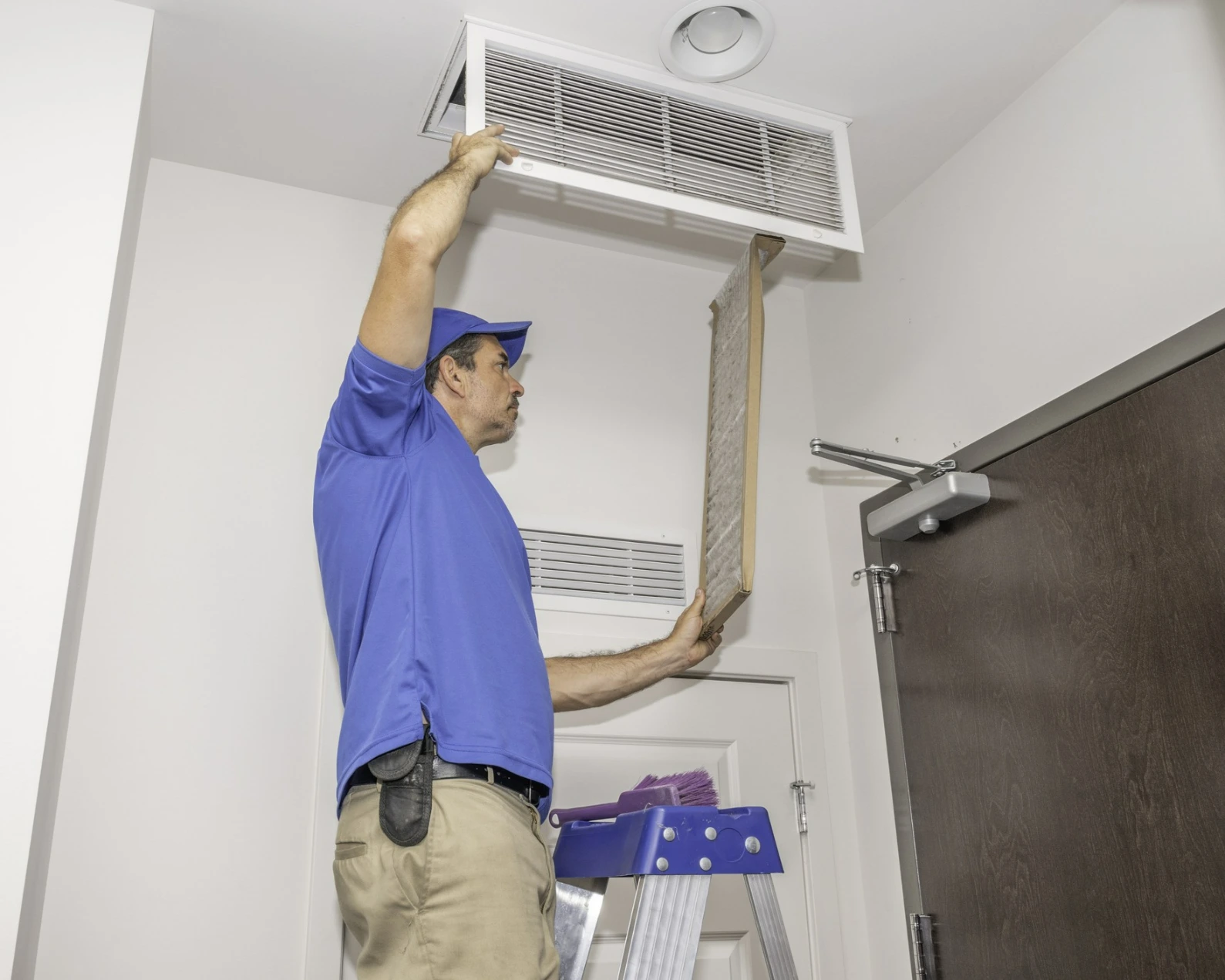Heat Recovery Ventilators
In Kitchener-Waterloo
At Aire One KW, we install and service energy recovery ventilators (ERVs) and heat recovery ventilators (HRVs) throughout Kitchener, Waterloo, Cambridge, and Guelph. These systems work with your current HVAC setup to keep your air fresh—without wasting energy. Contact us now!
Schedule Service1-866-234-8200get in touch
Fresh Air Made Easy with Aire One KW
Stale air isn’t just uncomfortable—it can make your home feel stuffy, damp, and even unhealthy. Without good airflow, that dirty air has nowhere to go. Sure, opening windows can help. But during winter or summer, it also lets your heated or cooled air escape. That means higher energy bills and less comfort.
That’s where proper ventilation systems come in. They quietly pull stale indoor air out and bring clean, filtered air in. From your first call to project completion, our friendly team is here to support you every step of the way. When you need an HVAC contractor you can count on, we’re ready to help. Get a free quote today!
Schedule Service

ERV vs HRV: What’s the Difference?
Residential ventilation may occur naturally or mechanically, but specific mechanical systems must maintain indoor air quality levels in airtight houses. There are broadly two types of ventilators available for your home. Both improve indoor air and reduce the load on your HVAC system. We can help you choose the right one for your home.


HEAT RECOVERY VENTILATOR (HRV)
Heat Recovery Ventilators (HRV) transfer heat to condition incoming air. It is ideal for northern climates with a more extended cold-weather season, where excess moisture can be a problem.


ENERGY RECOVERY VENTILATOR (ERV)
Energy Recovery Ventilators (ERV) transfers both heat and moisture. It is suitable for both warmer and cooler climates.


Get started on HVAC ventilators now
Why Your Home Needs a Ventilation System
Most modern homes are sealed tight to save energy. That’s great for your heating and cooling bills, but not great for your air quality. With little to no natural airflow, indoor air quickly becomes stale and polluted.
Over time, this can cause more than just a bad smell. Poor air quality has been linked to headaches, allergies, dry skin, mold growth, and respiratory problems. It’s especially hard on kids, seniors, and anyone with asthma or other breathing issues. Get your free quote now!
Schedule ServiceYour Reliable Air Duct Cleaning Service
Breathe Easy with a Home Ventilation System
Transform your home’s air quality with a state-of-the-art ventilation system. Say goodbye to stale air and hello to fresh, clean comfort—automatically. Whether you choose an ERV or HRV system, enjoy better air, enhanced comfort, and improved health for your home and everyone in it.
Reduces Moisture
Prevents mold growth by controlling indoor humidity levels.
Clears Pollutants
Eliminates allergens, odors, and harmful pollutants for cleaner air.
Balances Humidity
Maintains year-round comfort with optimal humidity levels.
Boosts HVAC Efficiency
Helps your HVAC system run smoothly, saving energy and costs.
Fresh, Healthy Air
Keeps your home’s air fresh, clean, and healthy for everyone.
Automatic Operation
No need for open windows or noisy fans—works seamlessly.
Is Your Home a Good Fit?
If your house is sealed tight, has no air leaks, or feels damp or stuffy, you need a ventilation system. Newer homes especially need mechanical ventilation to stay healthy. Installing a ventilation system for your house improves comfort and lowers long-term costs. We’ll show you how. Contact us now!
How Ventilation Systems Work
Ventilation systems work by moving stale indoor air out of your home while pulling in fresh outdoor air. As the air flows through the ventilator, heat and sometimes moisture is exchanged between the incoming and outgoing air streams. This process helps fresh air enter your home at a more comfortable temperature.
By keeping the air clean and balanced, the system reduces the workload on your HVAC, helping it run more efficiently and keeping your indoor environment healthier. These systems keep your air fresh year-round while helping you save on energy bills. Get a free quote now!
Schedule Service

Testimonials
Hear from Our Happy Customers
our locations
Ventilators in Kitchener-Waterloo
As a local HVAC company in Kitchener-Waterloo, Cambridge, and Guelph, we pride ourselves on providing reliable service backed by certified technicians. We offer clear pricing with no hidden fees, so you always know what to expect. With full HVAC services available under one roof, we deliver fast responses and dependable solutions.
- Kitchener
- Waterloo
- Cambridge
- Guelph
- Woodstock
- Orangeville
- Perth East
- St. Marys
Our Installation Process
Our ventilator services cover everything you need to keep your home’s air fresh and comfortable. We handle ventilator installation, including ERVs and HRVs, as well as complete home ventilation system setups and whole-house air exchanger installations. Our team handles every step safely and neatly. We keep it simple:
1
Visit your home and inspect the layout.
2
Help you choose between an ERV or HRV system.
3
Install the ventilator, ductwork, filters, and controls.
4
Test the airflow and set up the system.
5
Walk you through maintenance and use.
Top-Rated Ventilators in Ontario
Our ventilators in Waterloo and Kitchener help you maintain great oxygen levels inside your home and provide you with fresh air by filtering out gaseous pollutants like carbon monoxide, methane, and other harmful gases.
With Aire One Heating & Cooling, you can be sure about the quality of the air you breathe in, and our products will help you swap stale air with fresh air from outdoors. To know about our services and the installation process, you can contact our team!


Help Center
Frequently Asked Questions
If you still have questions about our indoor air quality services in Kitchener-Waterloo, check this part out, and after reading it, if there are still unanswered questions in your head, feel free to call our HVAC company; we will be happy to help!
Schedule Service1-866-234-8200









